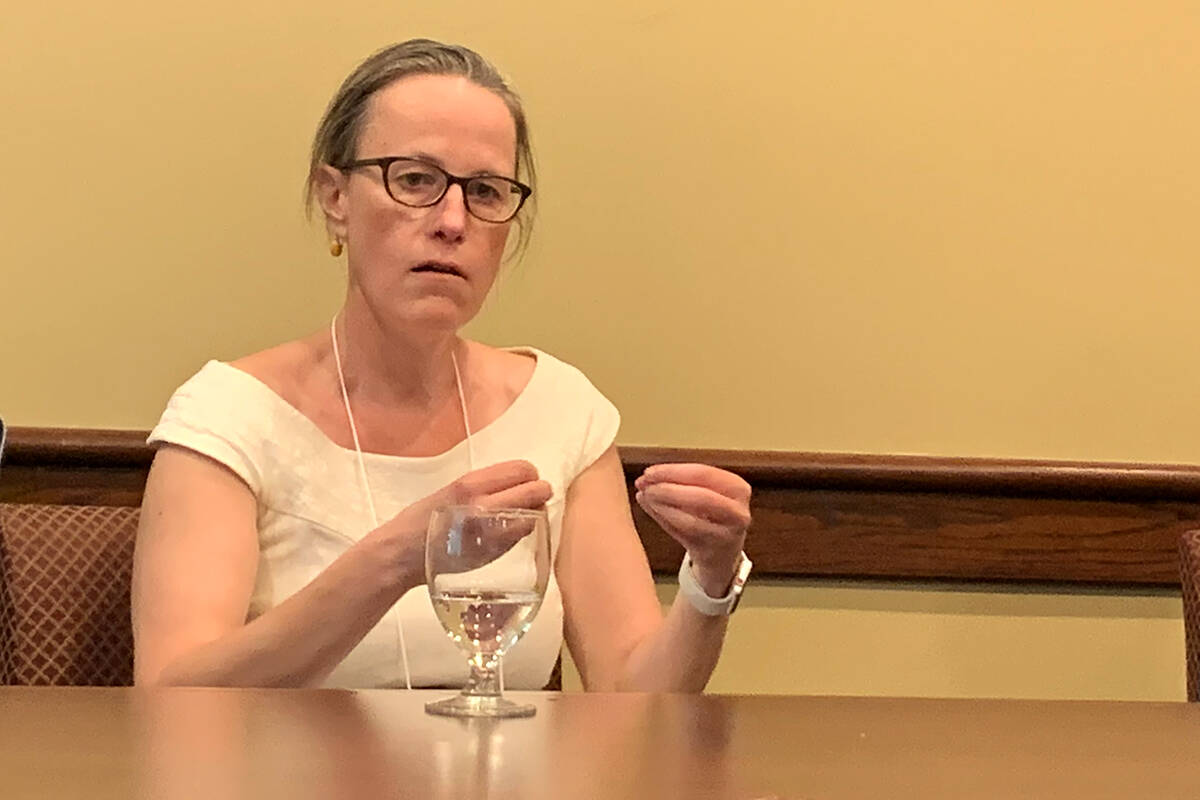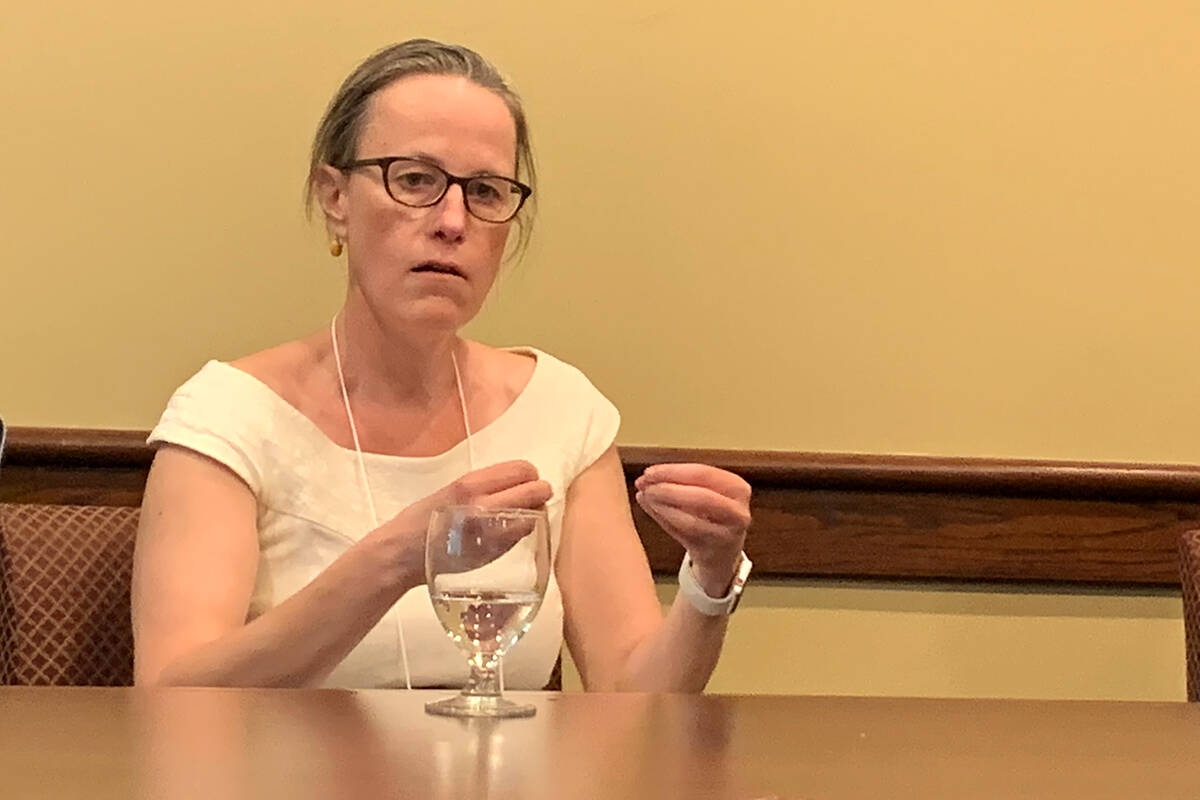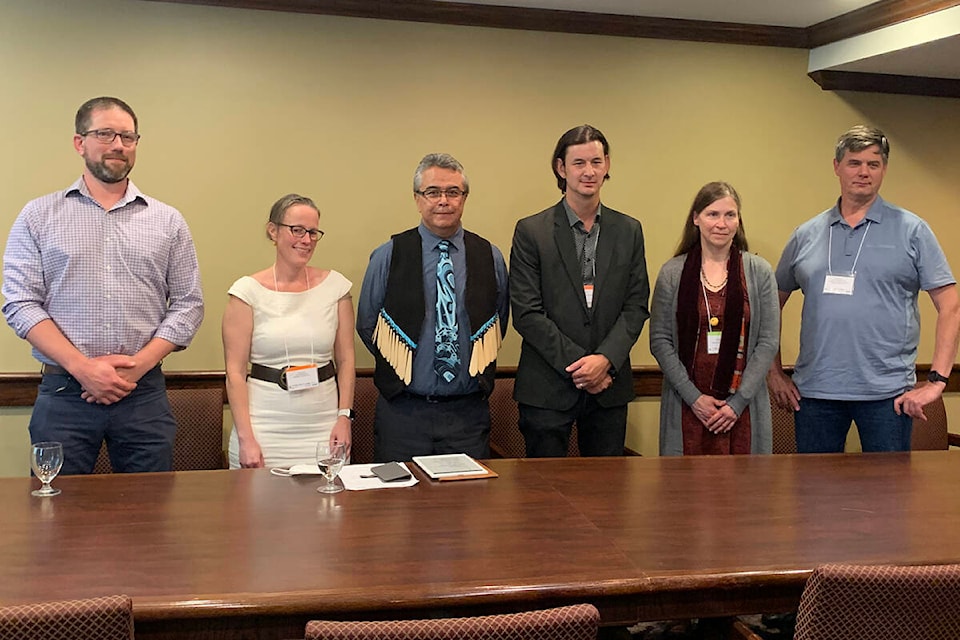A group of Fraser Valley and Lower Mainland government and private sector representatives have come together in an unprecedented way, to break down the silos between them as the region rebuilds from last fall’s devastating flooding.
The group, which is as-of-yet unnamed, planned a flood recovery forum and invited everyone involved in decision making relating to municipal, regional, provincial and federal levels. They called it the Build Back Better, Together Forum.
They booked a conference room at the Clarion Hotel in Abbotsford, and then they held their breath.
They weren’t sure who would RSVP, or what the buy in would be. Unlike other strategic governmental meetings, there was no previous framework to lean on; there was zero requirement under anyone’s job title to attend. To top it all off, Thursday was a hot and sunny day across the valley.
But the meeting room at the Clarion Hotel on Thursday (July 14) was packed with about 100 registrants, and a further 40 attended online. Following a full day of brainstorming and idea sharing between planners, elected officials, engineers, water experts, and more, organizers told media that they were blown away with the attendance.
Every municipality was represented from the Salish Sea to Yale.
Their main goal is to create a regional action plan that will see all the municipalities and First Nations working hand in hand instead of the usual practise of competing for federal funding. That dream plan, they said, will work for everyone along the Fraser River floodplain.
It’s idealistic, admitted forum co-chair Jason Lum, chair of the Fraser Valley Regional District and a Chilliwack city councillor.
But in the end, it would be what’s best economically and environmentally.
There are billions of recovery-fund dollars funnelling from the federal government, but not all of it gets to the municipalities. And the infrastructure they need to replace is decades old. And when the federal government funds a rebuild, he explained, it’s to pre-flood levels.
Floods that were seen in 2021, not to mention heat domes and fires, are going to be more common due to climate change, he said.
But it wasn’t just infrastructure that was at the centre of the discussion. And it wasn’t necessarily money, either.
It was actually salmon — one of this province’s most precious resources.
“What tends to be good for the salmon tends to be good for everyone,” said Aaron Hill, executive director of the Watershed Salmon Society. He is one of the six main leads of the group, along with Lum.
The other co-chair was Tyrone McNeil, who is also chair of the First Nations Emergency Planning Secretariat and president of Sto:lo Nation. Rounding out the leads in the group are Tamsin Lyle, a lead engineer from Ebbwater Consulting, Deborah Carlson from West Coast Environmental and Dave Zender from Farmland Advantage.
They say they want to “find common ground around high-level principles of building back better, together.”
Their forum was supported by Emergency Management BC, Indigenous Services Canada and Public Safety Canada. And the principles they are using, for the forum and any decision making, are based on the UN Sendai framework for disaster risk reduction that Canada and B.C have both signed. And importantly, it seeks to uphold B.C.’s Declaration on the Rights of Indigenous Peoples Act, also known as DRIPA.
“We have seen firsthand how conventional approaches have not ensured public safety, and note that climate change and current land use practices will only increase risk in the future,” their agenda notes for the forum read. “We came together in the wake of the November 2021 flooding but have long-standing interests in seeing B.C. move towards a holistic, collaborative approach to flood management that benefits people and other species, like salmon.
“The BBBT forum aims to break down the silos within all levels of government and find common ground from which to build resilient communities and healthy floodplain ecosystems.”
Opening remarks from Tribal Chief & Minister at the "Building Back Better Together" conference in Abbotsford. ~90 folks gathered to talk about improving flood control & disaster management in the lower Fraser.
— Watershed Watch Salmon Society (@WatershedWatch_)
One of the keynote speakers was Mike Farnworth, Minister of Public Safety and Solicitor General. The following day, his office announced $81.8 million in funding through the Green Infrastructure Adaptation, Resilience and Disaster Mitigation (ARDM) program.
In a news release, the province said that eligible projects include installing flood protection works, upgrades or retrofits to existing infrastructure, such as dikes, flood walls, pump stations, seawalls, bulkheads, jetties and dam flood risk reduction, opening buried watercourses, restoring wetlands and restoring natural shoreline protection buffers through wetlands.
But at the forum, they chose not to focus so much on the projects, but just coming together to discuss what will work best for everyone, as everyone is connected to the same river.
There is no set-in-stone schedule for the next meeting. They don’t want to overwhelm everyone involved with a heavy schedule, McNeil said. But he was heartened by the sharing of information that took place, and the learning that happened.
In his closing remarks at the forum, he said he will be looking to the attendees for ideas on the next steps.
And he left them with a parting reminder that it’s better to spend the money that’s coming on resilience for the future rather than always being in post-disaster recovery.
READ MORE:
jessica.peters@abbynews.com
Like us on and follow us on .
Want to support local journalism during the pandemic? Make a donation





